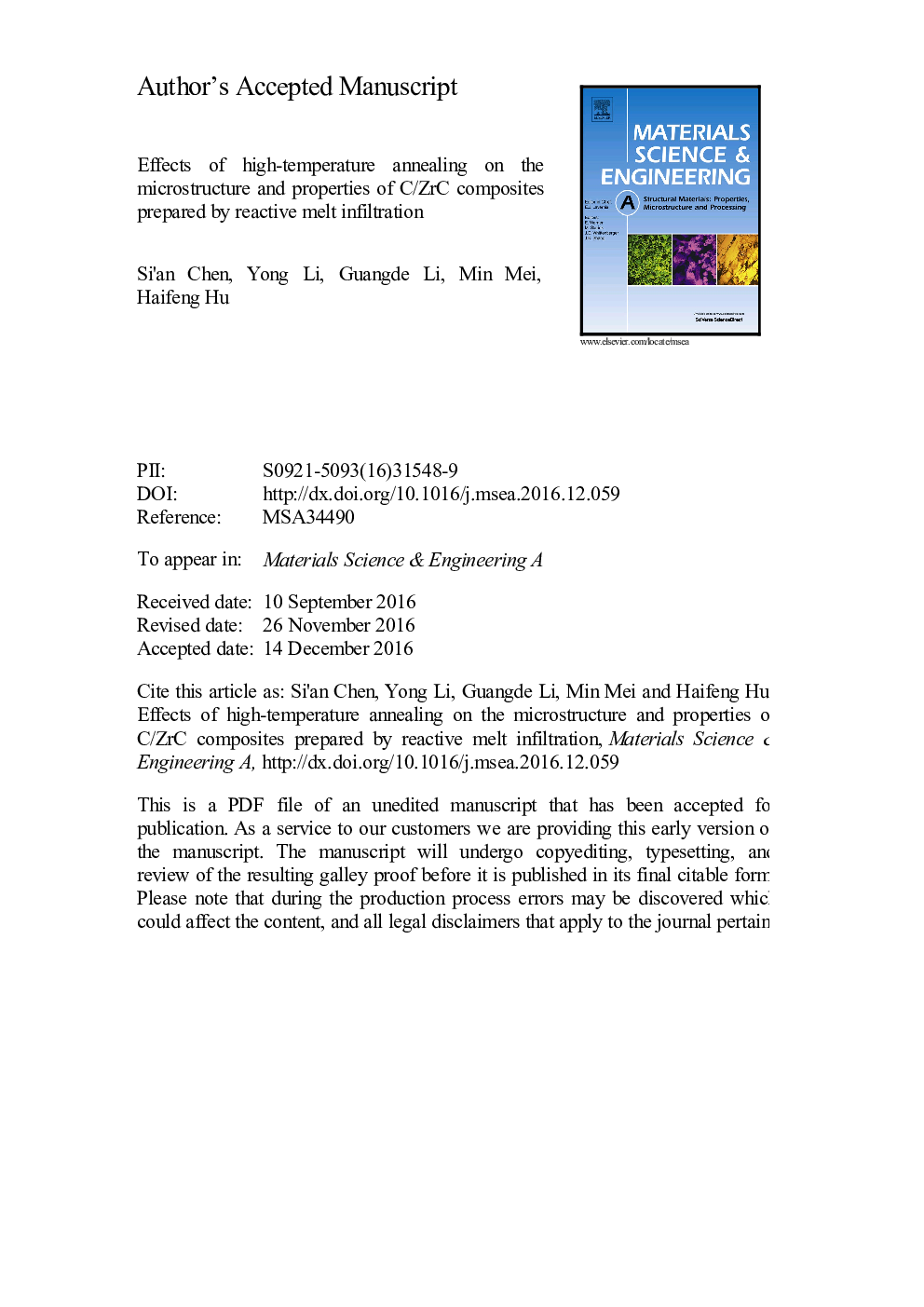| Article ID | Journal | Published Year | Pages | File Type |
|---|---|---|---|---|
| 5456717 | Materials Science and Engineering: A | 2017 | 19 Pages |
Abstract
C/ZrC composites prepared by reactive melt infiltration at 1900 °C contained ~4.2 vol% residual α-Zr which was harmful to the high-temperature mechanical properties and ablation resistance. Thus, the composites were heat-treated for 1 h from 1200 °C to 2000 °C. The residual α-Zr amount was only 0.6 vol% after annealing at 2000 °C, indicating that high temperature promoted the diffusion and reaction of Zr and C to consume α-Zr. C/ZrC composites had the optimum flexural properties of 192 MPa and 17.7 GPa after annealing at 1600 °C. The ablation resistance was improved after high-temperature annealing, and the mass loss rate and linear recession rate decreased as the temperature increased, which were 0.0021 g/s and 0.0008 mm/s respectively after annealing at 2000 °C.
Keywords
Related Topics
Physical Sciences and Engineering
Materials Science
Materials Science (General)
Authors
Si'an Chen, Hongliang Ji, Yong Li, Guangde Li, Min Mei, Haifeng Hu,
